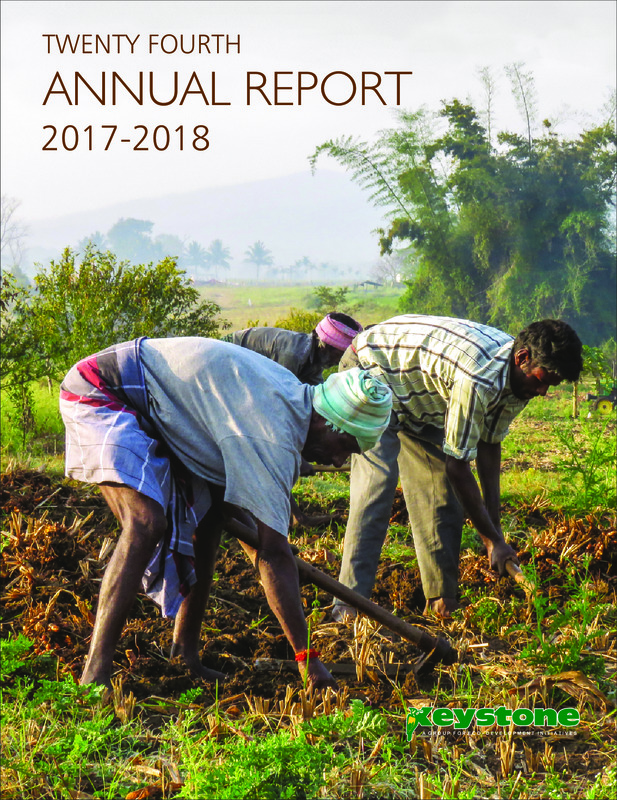-
 Keystone Handbook on Honey Hunting
Keystone Handbook on Honey Hunting
-
 Adivasis and Livelihoods
Adivasis and Livelihoods
-
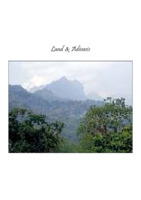 Land And Adivasis
Land And Adivasis
-
 Honey Hunters and Bee Keepers of Tamilnadu
Honey Hunters and Bee Keepers of Tamilnadu
-
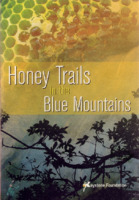 Honey Trails in the Blue Mountains
Honey Trails in the Blue Mountains
-
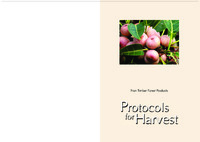 Protocols for Harvest
Protocols for Harvest This resource pack emphasizes sustainable harvesting practices for Non-Timber Forest Products (NTFPs) to balance conservation and livelihoods. It provides guidelines and methodologies for community-based ecological monitoring, incorporating ecological parameters, indigenous knowledge, and traditional practices.
-
 Forest plants of the Nilgiri's_Southern Nilgiri
Forest plants of the Nilgiri's_Southern Nilgiri The Forest plants of The Nilgiris_SouthrenNilgiri provides an overview of the Pillur Valley, located in the Nilgiris Biosphere Reserve, highlighting its diverse ecosystems, including dry deciduous forests, riparian forests, and grasslands, along with their unique plant species. It emphasizes the importance of wild edible tubers, rhizomes, and young shoots in the diets of indigenous communities, particularly the Irula people, who possess traditional knowledge about harvesting these resources sustainably. The document also acknowledges contributions from various individuals and organizations in ecological monitoring and expresses concern over the declining knowledge of plant uses among younger generations. Additionally, it aims to document and preserve local ecological knowledge while promoting awareness of the region's rich biodiversity and the need for its conservation.
-
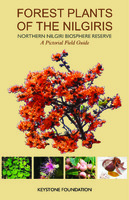 Forest plants of the Nilgiri's _ Northern Nilgiri
Forest plants of the Nilgiri's _ Northern Nilgiri The southern part of the Nilgiri Biosphere Reserve has a wide variation of flora ranging from the dry deciduous, riparian forest and grassland. The third in a five part series, this field guide covers the dominant plants of this zone.
-
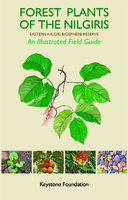 Forest plants of the Nilgiri's _ Eastern Nilgiri
Forest plants of the Nilgiri's _ Eastern Nilgiri The book contains primary work with adivasis or indigenous people of Nilgiris Eastern Slopes, the Kurumbas and the Irulas, especially those who have a special affinity to the forest. Years of work in the forests of the Nilgiris, vividly conveyed the high diversity of this region.
-
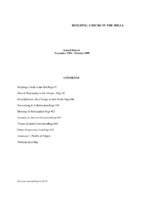 Annual Report_1994-1995
Annual Report_1994-1995 This resource contains an overview of activities taken up during the course of FY 1994-1995 at Keystone Foundation, inclusive of programmatic activities, finances and updates from the field centers.
-
 Annual Report_2020-21
Annual Report_2020-21 This resource contains an overview of activities taken up during the course of FY 2020-21 at Keystone Foundation, inclusive of programmatic activities, finances and updates from the field centres
-
 Faceless, Fearless honey hunters_2009-08-10 The Local
Faceless, Fearless honey hunters_2009-08-10 The Local The document discusses the traditional practice of honey hunting by indigenous communities, particularly the Kurumbas, who have long relied on their skills to harvest honey from wild bees in tropical forests. It highlights the cultural significance of this practice, which is threatened by modern challenges such as deforestation and changes in land use. The honey is primarily collected from the giant honeybee, Apis dorsata, and the methods used by these communities, including the timing of harvesting and the respectful approach to the bees, are described. The document emphasizes the need to preserve these traditional practices and the harmonious relationship these communities have with their natural environment.
Honey hunting practices of Kurumba community in Nilgiris, the used traditional skills and techniques perfected by several generations.
-
 Conference on Bees, Biodiversity and Forest Livelihoods in Nilgiris Biosphere Reserve_
2009 60 no 79 Protected Area Update
Conference on Bees, Biodiversity and Forest Livelihoods in Nilgiris Biosphere Reserve_
2009 60 no 79 Protected Area Update The international conference is to elucidate the interdependencies between bees, biodiversity and the forest livelihoods in the Nilgiri Biosphere Reserve.
-
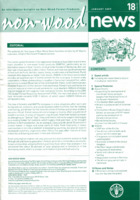 Voices from the Forest film review_2009 01 Nonwood News
Voices from the Forest film review_2009 01 Nonwood News The document discusses the importance of non-wood forest products (NWFPs) in addressing food security, especially during economic crises and natural disasters. It highlights how forests provide essential food sources such as fruits, mushrooms, and bushmeat, which are crucial for rural communities, particularly in developing countries. The document emphasizes that NWFPs not only contribute to nutrition but also support livelihoods by generating income and employment, with a significant portion of forestry jobs located in these regions. Additionally, it notes the role of NWFPs in cultural practices and their potential for sustainable development, while also addressing challenges faced by communities reliant on these resources.
In this Film they showed, NTFP's are the critical source of income for the indigenous people and forest dwelling communities, through the assistance of the KF productivity has increased, the new technology for the processing implemented.
-
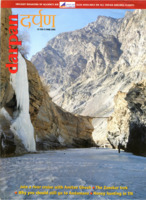 Honey, it's up there_2005 February- March- Darpan Alliance Air Inflight magazine
Honey, it's up there_2005 February- March- Darpan Alliance Air Inflight magazine Honey hunting practices of Kurumba community in Nilgiris,
-
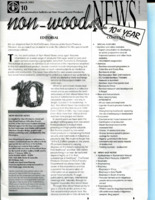 Developing Markets for Tribal Organic Products Experiences from Nilgiris, India_2003 03 Non Wood News - Case Study
Developing Markets for Tribal Organic Products Experiences from Nilgiris, India_2003 03 Non Wood News - Case Study The Kurumba and Irula communities are traditional hunter-gatherers. The issues concerning access to external markets and the need for product certification and authentication represent a constraint to the industry and an area in which beekeepers deserve support, The Criteria of EU. Standards and geographical limitations for honey.
-
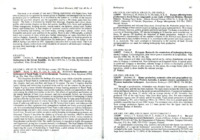 Beekeeping Apicultural Abstracts_1997
Beekeeping Apicultural Abstracts_1997 Honey hunting in many tribal areas is a traditional activity. The process of honey hunting, materials used for hunting, earlier honey was sold to the intermediate person by less price.
-
 Green shop opens in Mysore_2009-09-10 The Local
Green shop opens in Mysore_2009-09-10 The Local Green shop is the outlet of Keystone foundation. The shop is selling NTFP's from the indigenous communities, and the other community people art works.
-
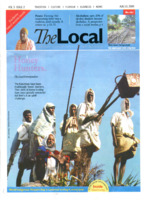 Follow Your Heart_2009-08-10 The Local
Follow Your Heart_2009-08-10 The Local In this Journal gives a story of the pushpinder khajuria becomes a volunteer at the Bee museum.
-
 Field Guide & Nature Interpretation Center press release_2009 08 no 80 Protected Area Update
Field Guide & Nature Interpretation Center press release_2009 08 no 80 Protected Area Update The Field guide is the pictorial guide includes plants of bandipur, MTR, by Keystone, all the information in this is collected from the Irula people in this region. Set up an nature interpretation centre in sathyamangalam Wildlife Santuary.
-
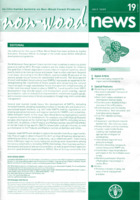 Honey and Wax-A Sticky Challenge_2009 07 Nonwood News
Honey and Wax-A Sticky Challenge_2009 07 Nonwood News The Nilgiri is the most ecologically fragile area in the region. Honey gathering is the traditional activity with a long histiry in this region. Keystone increased its efforts to inform consumers about the honey and the people behind it. It helps to find the local market and the fair trading.
-
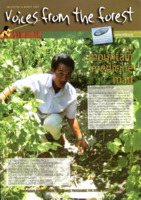 Keystone makes finals of prestigious World Challenge 2008_2009 03 no 16 Voices from the Forest
Keystone makes finals of prestigious World Challenge 2008_2009 03 no 16 Voices from the Forest The world challenge is an global competition, KF is working to support the sustainable practice of the honey hunters and help them to sell their product for a fair price.
-
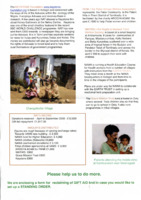 The Nilgiris Adivasi - About Keystone_2008-2009
The Nilgiris Adivasi - About Keystone_2008-2009 The Nilgiri adivasi Trust works with KF in kotagiri in concern with the ways of the life of the Adivasi and involves them in research. There are various welfare society and associations also helping the Adivasi people in NBR.
-
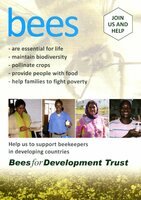 Bees for Development pamphlet_Shiny
Bees for Development pamphlet_Shiny This photograph is from the bees for Development, it indicates the Bees are the essential for life, it maintains the diversity, pollinate the crops, it gives food to the people, and finally bees are helping people through financially to fight poverty.
-
 Bees for Development ad
Bees for Development ad This poster shows the Honey and beekeeping is is the main livelihood product of the tribal communities in africa, uganda, south India, etc..,
 Keystone Handbook on Honey Hunting
Keystone Handbook on Honey Hunting
 Adivasis and Livelihoods
Adivasis and Livelihoods
 Land And Adivasis
Land And Adivasis
 Honey Hunters and Bee Keepers of Tamilnadu
Honey Hunters and Bee Keepers of Tamilnadu
 Honey Trails in the Blue Mountains
Honey Trails in the Blue Mountains
 Protocols for Harvest This resource pack emphasizes sustainable harvesting practices for Non-Timber Forest Products (NTFPs) to balance conservation and livelihoods. It provides guidelines and methodologies for community-based ecological monitoring, incorporating ecological parameters, indigenous knowledge, and traditional practices.
Protocols for Harvest This resource pack emphasizes sustainable harvesting practices for Non-Timber Forest Products (NTFPs) to balance conservation and livelihoods. It provides guidelines and methodologies for community-based ecological monitoring, incorporating ecological parameters, indigenous knowledge, and traditional practices. Forest plants of the Nilgiri's_Southern Nilgiri The Forest plants of The Nilgiris_SouthrenNilgiri provides an overview of the Pillur Valley, located in the Nilgiris Biosphere Reserve, highlighting its diverse ecosystems, including dry deciduous forests, riparian forests, and grasslands, along with their unique plant species. It emphasizes the importance of wild edible tubers, rhizomes, and young shoots in the diets of indigenous communities, particularly the Irula people, who possess traditional knowledge about harvesting these resources sustainably. The document also acknowledges contributions from various individuals and organizations in ecological monitoring and expresses concern over the declining knowledge of plant uses among younger generations. Additionally, it aims to document and preserve local ecological knowledge while promoting awareness of the region's rich biodiversity and the need for its conservation.
Forest plants of the Nilgiri's_Southern Nilgiri The Forest plants of The Nilgiris_SouthrenNilgiri provides an overview of the Pillur Valley, located in the Nilgiris Biosphere Reserve, highlighting its diverse ecosystems, including dry deciduous forests, riparian forests, and grasslands, along with their unique plant species. It emphasizes the importance of wild edible tubers, rhizomes, and young shoots in the diets of indigenous communities, particularly the Irula people, who possess traditional knowledge about harvesting these resources sustainably. The document also acknowledges contributions from various individuals and organizations in ecological monitoring and expresses concern over the declining knowledge of plant uses among younger generations. Additionally, it aims to document and preserve local ecological knowledge while promoting awareness of the region's rich biodiversity and the need for its conservation. Forest plants of the Nilgiri's _ Northern Nilgiri The southern part of the Nilgiri Biosphere Reserve has a wide variation of flora ranging from the dry deciduous, riparian forest and grassland. The third in a five part series, this field guide covers the dominant plants of this zone.
Forest plants of the Nilgiri's _ Northern Nilgiri The southern part of the Nilgiri Biosphere Reserve has a wide variation of flora ranging from the dry deciduous, riparian forest and grassland. The third in a five part series, this field guide covers the dominant plants of this zone. Forest plants of the Nilgiri's _ Eastern Nilgiri The book contains primary work with adivasis or indigenous people of Nilgiris Eastern Slopes, the Kurumbas and the Irulas, especially those who have a special affinity to the forest. Years of work in the forests of the Nilgiris, vividly conveyed the high diversity of this region.
Forest plants of the Nilgiri's _ Eastern Nilgiri The book contains primary work with adivasis or indigenous people of Nilgiris Eastern Slopes, the Kurumbas and the Irulas, especially those who have a special affinity to the forest. Years of work in the forests of the Nilgiris, vividly conveyed the high diversity of this region. Annual Report_1994-1995 This resource contains an overview of activities taken up during the course of FY 1994-1995 at Keystone Foundation, inclusive of programmatic activities, finances and updates from the field centers.
Annual Report_1994-1995 This resource contains an overview of activities taken up during the course of FY 1994-1995 at Keystone Foundation, inclusive of programmatic activities, finances and updates from the field centers. Annual Report_2020-21 This resource contains an overview of activities taken up during the course of FY 2020-21 at Keystone Foundation, inclusive of programmatic activities, finances and updates from the field centres
Annual Report_2020-21 This resource contains an overview of activities taken up during the course of FY 2020-21 at Keystone Foundation, inclusive of programmatic activities, finances and updates from the field centres Faceless, Fearless honey hunters_2009-08-10 The Local The document discusses the traditional practice of honey hunting by indigenous communities, particularly the Kurumbas, who have long relied on their skills to harvest honey from wild bees in tropical forests. It highlights the cultural significance of this practice, which is threatened by modern challenges such as deforestation and changes in land use. The honey is primarily collected from the giant honeybee, Apis dorsata, and the methods used by these communities, including the timing of harvesting and the respectful approach to the bees, are described. The document emphasizes the need to preserve these traditional practices and the harmonious relationship these communities have with their natural environment. Honey hunting practices of Kurumba community in Nilgiris, the used traditional skills and techniques perfected by several generations.
Faceless, Fearless honey hunters_2009-08-10 The Local The document discusses the traditional practice of honey hunting by indigenous communities, particularly the Kurumbas, who have long relied on their skills to harvest honey from wild bees in tropical forests. It highlights the cultural significance of this practice, which is threatened by modern challenges such as deforestation and changes in land use. The honey is primarily collected from the giant honeybee, Apis dorsata, and the methods used by these communities, including the timing of harvesting and the respectful approach to the bees, are described. The document emphasizes the need to preserve these traditional practices and the harmonious relationship these communities have with their natural environment. Honey hunting practices of Kurumba community in Nilgiris, the used traditional skills and techniques perfected by several generations. Conference on Bees, Biodiversity and Forest Livelihoods in Nilgiris Biosphere Reserve_
2009 60 no 79 Protected Area Update The international conference is to elucidate the interdependencies between bees, biodiversity and the forest livelihoods in the Nilgiri Biosphere Reserve.
Conference on Bees, Biodiversity and Forest Livelihoods in Nilgiris Biosphere Reserve_
2009 60 no 79 Protected Area Update The international conference is to elucidate the interdependencies between bees, biodiversity and the forest livelihoods in the Nilgiri Biosphere Reserve. Voices from the Forest film review_2009 01 Nonwood News The document discusses the importance of non-wood forest products (NWFPs) in addressing food security, especially during economic crises and natural disasters. It highlights how forests provide essential food sources such as fruits, mushrooms, and bushmeat, which are crucial for rural communities, particularly in developing countries. The document emphasizes that NWFPs not only contribute to nutrition but also support livelihoods by generating income and employment, with a significant portion of forestry jobs located in these regions. Additionally, it notes the role of NWFPs in cultural practices and their potential for sustainable development, while also addressing challenges faced by communities reliant on these resources. In this Film they showed, NTFP's are the critical source of income for the indigenous people and forest dwelling communities, through the assistance of the KF productivity has increased, the new technology for the processing implemented.
Voices from the Forest film review_2009 01 Nonwood News The document discusses the importance of non-wood forest products (NWFPs) in addressing food security, especially during economic crises and natural disasters. It highlights how forests provide essential food sources such as fruits, mushrooms, and bushmeat, which are crucial for rural communities, particularly in developing countries. The document emphasizes that NWFPs not only contribute to nutrition but also support livelihoods by generating income and employment, with a significant portion of forestry jobs located in these regions. Additionally, it notes the role of NWFPs in cultural practices and their potential for sustainable development, while also addressing challenges faced by communities reliant on these resources. In this Film they showed, NTFP's are the critical source of income for the indigenous people and forest dwelling communities, through the assistance of the KF productivity has increased, the new technology for the processing implemented. Honey, it's up there_2005 February- March- Darpan Alliance Air Inflight magazine Honey hunting practices of Kurumba community in Nilgiris,
Honey, it's up there_2005 February- March- Darpan Alliance Air Inflight magazine Honey hunting practices of Kurumba community in Nilgiris, Developing Markets for Tribal Organic Products Experiences from Nilgiris, India_2003 03 Non Wood News - Case Study The Kurumba and Irula communities are traditional hunter-gatherers. The issues concerning access to external markets and the need for product certification and authentication represent a constraint to the industry and an area in which beekeepers deserve support, The Criteria of EU. Standards and geographical limitations for honey.
Developing Markets for Tribal Organic Products Experiences from Nilgiris, India_2003 03 Non Wood News - Case Study The Kurumba and Irula communities are traditional hunter-gatherers. The issues concerning access to external markets and the need for product certification and authentication represent a constraint to the industry and an area in which beekeepers deserve support, The Criteria of EU. Standards and geographical limitations for honey. Beekeeping Apicultural Abstracts_1997 Honey hunting in many tribal areas is a traditional activity. The process of honey hunting, materials used for hunting, earlier honey was sold to the intermediate person by less price.
Beekeeping Apicultural Abstracts_1997 Honey hunting in many tribal areas is a traditional activity. The process of honey hunting, materials used for hunting, earlier honey was sold to the intermediate person by less price. Green shop opens in Mysore_2009-09-10 The Local Green shop is the outlet of Keystone foundation. The shop is selling NTFP's from the indigenous communities, and the other community people art works.
Green shop opens in Mysore_2009-09-10 The Local Green shop is the outlet of Keystone foundation. The shop is selling NTFP's from the indigenous communities, and the other community people art works. Follow Your Heart_2009-08-10 The Local In this Journal gives a story of the pushpinder khajuria becomes a volunteer at the Bee museum.
Follow Your Heart_2009-08-10 The Local In this Journal gives a story of the pushpinder khajuria becomes a volunteer at the Bee museum. Field Guide & Nature Interpretation Center press release_2009 08 no 80 Protected Area Update The Field guide is the pictorial guide includes plants of bandipur, MTR, by Keystone, all the information in this is collected from the Irula people in this region. Set up an nature interpretation centre in sathyamangalam Wildlife Santuary.
Field Guide & Nature Interpretation Center press release_2009 08 no 80 Protected Area Update The Field guide is the pictorial guide includes plants of bandipur, MTR, by Keystone, all the information in this is collected from the Irula people in this region. Set up an nature interpretation centre in sathyamangalam Wildlife Santuary. Honey and Wax-A Sticky Challenge_2009 07 Nonwood News The Nilgiri is the most ecologically fragile area in the region. Honey gathering is the traditional activity with a long histiry in this region. Keystone increased its efforts to inform consumers about the honey and the people behind it. It helps to find the local market and the fair trading.
Honey and Wax-A Sticky Challenge_2009 07 Nonwood News The Nilgiri is the most ecologically fragile area in the region. Honey gathering is the traditional activity with a long histiry in this region. Keystone increased its efforts to inform consumers about the honey and the people behind it. It helps to find the local market and the fair trading. Keystone makes finals of prestigious World Challenge 2008_2009 03 no 16 Voices from the Forest The world challenge is an global competition, KF is working to support the sustainable practice of the honey hunters and help them to sell their product for a fair price.
Keystone makes finals of prestigious World Challenge 2008_2009 03 no 16 Voices from the Forest The world challenge is an global competition, KF is working to support the sustainable practice of the honey hunters and help them to sell their product for a fair price. The Nilgiris Adivasi - About Keystone_2008-2009 The Nilgiri adivasi Trust works with KF in kotagiri in concern with the ways of the life of the Adivasi and involves them in research. There are various welfare society and associations also helping the Adivasi people in NBR.
The Nilgiris Adivasi - About Keystone_2008-2009 The Nilgiri adivasi Trust works with KF in kotagiri in concern with the ways of the life of the Adivasi and involves them in research. There are various welfare society and associations also helping the Adivasi people in NBR. Bees for Development pamphlet_Shiny This photograph is from the bees for Development, it indicates the Bees are the essential for life, it maintains the diversity, pollinate the crops, it gives food to the people, and finally bees are helping people through financially to fight poverty.
Bees for Development pamphlet_Shiny This photograph is from the bees for Development, it indicates the Bees are the essential for life, it maintains the diversity, pollinate the crops, it gives food to the people, and finally bees are helping people through financially to fight poverty. Bees for Development ad This poster shows the Honey and beekeeping is is the main livelihood product of the tribal communities in africa, uganda, south India, etc..,
Bees for Development ad This poster shows the Honey and beekeeping is is the main livelihood product of the tribal communities in africa, uganda, south India, etc..,